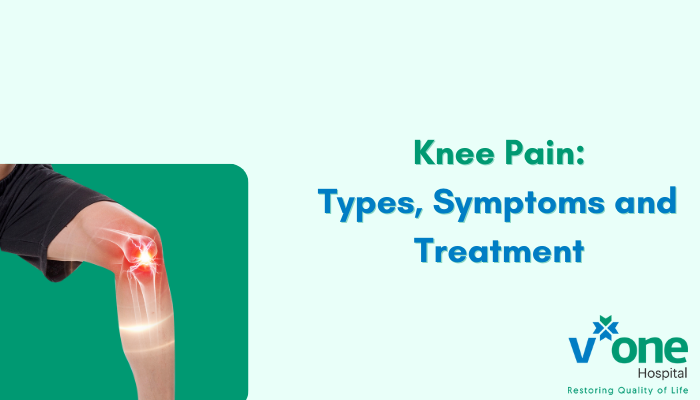Knee Pain – Guide to Symptoms, Types and Treatment
A hurting knee is a usual complaint among adults, but what happens when it becomes commonplace for a 30-year-old? How does it hurt one’s ability to function in life?
The truth is that knee pain can considerably degrade your quality of life. The difficulty of the simple tasks of sitting down and then standing up can keep you from doing all that you need to do in a day.
If constant knee pain has kept you from accomplishing the simplest of tasks every day, regardless of the cause, there is something you can do about it!
Symptoms of Knee Pain
People may experience a hurting knee differently- some with a different kind of pain, others hurting in a different location. But the signs and symptoms of knee pain more or less present as:
- Pain, swelling, numbness, tingling, discoloration, and/or stiffness
- Red knees that are sensitive to touch
- Weak knees
- Instability in the knees
- Clicking noises when you walk
- Inability to flex or completely straighten the knee
- Buckling of the knee
- Inability to bear weight on the knee
Types of Knee Pain: What Causes Knee Pain?
From aging and pregnancy to injury and illness, literally, anything can cause knee pain. With the most common causes being aging, injury, and repeated stress on the knee, other common causes include:
- Fractures from falls or from osteoporosis
- ACL injuries from playing basketball and other sports
- Torn meniscus from sudden twisting
- Knee bursitis from repeated pressure
- Patellar tendinitis from activities like running, jumping, and cycling
- A torn cartilage
- Baker cysts
- Cancers of the bone or those spreading to the bones
- Infection in knee bones
- Infection in knee joint
- Sprained or strained knee ligaments and/or muscles caused by a blow to or a twist of the knee
- Osteoarthritis or rheumatoid arthritis
- A dislocated kneecap
Some conditions like Chondromalacia patella (when the tissue under the kneecap softens and breaks down, causing pain whenever the knee and the thigh bone rub together) can also cause chronic knee pain.
Sudden or acute injuries to the knee can include muscle tension injuries (sprains or strains), MCL injuries, ACL injuries, meniscus tears, bursa inflammation, and patellar injuries (of the knee cap). Injuries because of overuse of the knee from prolonged pressure, biking, jogging, jumping, skiing, and other such activities can cause inflammation and irritation, and lead to conditions like bursitis, tendinitis, tendinosis, plica syndrome, and patellofemoral pain syndrome. Knee pain caused by chronic conditions includes that from osteoarthritis, auto-immune conditions like rheumatoid arthritis, gout, and lupus, Baker’s cysts, cellulitis, septic bursitis, infectious arthritis, osteomyelitis, osteochondritis dissecans, and Osgood-Schlatter Disease.
How is Knee Pain Treated?
Treatment for knee pain may include certain medications, physical therapy, knee braces, injections like corticosteroids, hyaluronic acid, and PRP injections, and surgery, like arthroscopic surgery, partial knee replacement surgery, total knee replacement, or osteotomy.
If X-rays show joint destruction and other methods don’t provide relief, the solution may be a total joint replacement of the knee.
Exercises for Knee Pain
Lifestyle changes like rest, ice packs, heat packs, compression, and elevation are recommended. Additionally, certain exercises can help alleviate your knee pain.
1. Heel & Calf Stretch
Put your hands on the wall with one foot back, and with flat heels and slightly bent knees, lean into a stretch for 30 seconds. Change legs and repeat.
2. Quadriceps Stretch
Feet shoulder-width apart, bend a knee, and grab your ankle behind your thigh, pulling as far as you can for 30 seconds. Change legs and repeat.
3. Hamstring Stretch
Lying down with straight legs, lift one leg supporting it with your hands behind your thigh, and pull your knee towards your chest. Hold for 30 seconds, change legs, and repeat.
4. Calf Raises
With feet shoulder-width apart, lift both heels off the ground, and then slowly lower them to the initial position. Do 2-3 sets of 10 repetitions.
5. Half Squat
Stand with feet shoulder-width apart, hands on hips or out in front. Look straight and squat down 10 inches (half a squat). Hold a few seconds, then stand up by pushing through your heels. Do 2-3 sets of 10 repetitions.
6. Leg Extensions
Sit in a chair with feet flat, hip-width apart on the floor. Contract your thigh muscles to extend one leg as high as possible without raising your hips. Hold, then lower to the initial position. Do 2-3 sets of 10 repetitions per leg.
7. Hamstring Curl
With feet hip-width apart, lift a foot and raise your heel toward the ceiling as high as you can. Hold for 5-10 seconds, then lower to the initial position. Do 2-3 sets of 10 repetitions per leg.
Additionally, you can also do straight, side, and prone leg raises.
If you suffer from knee pain, see your doctor now, and remember to keep in shape, shed the extra pounds, practice correctly, exercise regularly, and work on your strength and flexibility.

